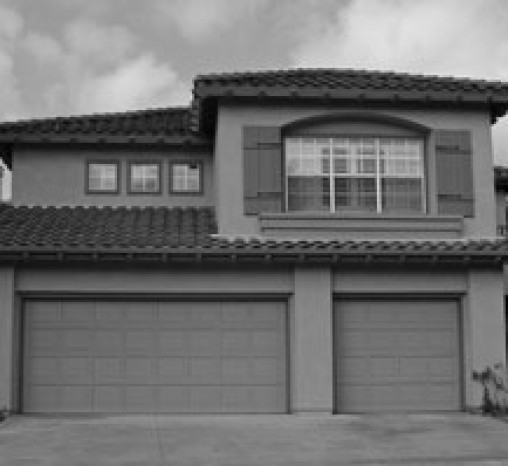Weathertightness requirements for garages

Garages need to be built to Acceptable Solution E2/AS1 if they contribute to the overall weathertightness of a building being built to the requirements of E2/AS1.
This information was confirmed as current in February 2016. It originally appeared in Codewords newsletters prior to January 2014.
This guidance is clarification for building officials, designers and product manufacturers on how weathertightness construction of timber-framed buildings designed to Acceptable Solution E2/AS1 applies to garages.
E2/AS1 applies to timber-framed buildings as defined in its scope, but excludes outbuildings such as stand-alone garages and other unlined structures (refer to Paragraph 1.0 of E2/AS1 for a complete description of the application of the Acceptable Solution and its exclusions). However, because some attached garages, as commonly built, may contribute to the overall weathertightness of the building, some details for garages have been included in E2/AS1.
The test for whether E2/AS1 (where used for compliance of the overall building) applies to an attached garage, is as follows.
- Scenario 1 - if removing all or part of the garage affects weathertightness of the remaining building, then the garage must be considered as part of the overall weathertightness of the building, and can be designed to E2/AS1
- Scenario 2 - if removing all or part of the garage does not materially affect weathertightness of the remaining building, then E2/AS1 need not apply to the garage.
Scenario 1
Where attached garages contribute to the overall weathertightness of the building, then under E2/AS1 they must have the following features:
- exterior wall and roof claddings compliant with E2/AS1
- underlays to exterior walls and roof as required in Paragraph 8.1.5
- doors (and windows, if any) that are weather resistant and installed to the requirements of Paragraph 9.1.10 (Note: garage door-to-frame details are not included in E2/AS1 and must be considered separately. Such considerations would be limited to ensuring any leakage around or through garage doors does not result in damage (deterioration) to the garage or house, or dampness in the house)
- wall linings on all garage walls, except on external garage walls if a rigid underlay provided, in accordance with Paragraph 9.1.3.4 c) and d). (Note that ceiling linings are not required under E2/AS1, but may be required under Clause H1, depending on arrangements for thermal insulation)
- minimum ground-to-floor clearances at external walls and at doors compliant with Paragraph 9.1.3.
Scenario 2
Even if a garage does not affect the overall weathertightness of the remaining building, or is constructed as a completely independent building, it is still required to comply with Clause E2 of the Building Code. This includes avoiding 'undue dampness, or damage to building elements' (Clause E2.3.2).
Damage can be avoided by ensuring timber treatments are appropriate to the timber's exposure. Avoidance of 'undue dampness' can be a lower standard for a garage than for a house. So a garage may not need to be built to the standards prescribed in E2/AS1, and may not normally require:
- damp-proof membranes under floor slabs (floors are not specifically required)
- wall and ceiling linings
- wall and roof underlays
- doors and windows compliant with Paragraph 9.1.10.
Additional considerations for Scenario 2
However, even where these features are not required, there are good reasons to include some of them.
In particular, it can be more cost-effective at the construction stage to include damp-proof membranes (to prevent the effect of migrating groundwater vapour through slabs), and underlays (to minimise the risk and inconvenience of condensation).
These features will greatly improve the amenity of the garage, and may better enable future conversion to a habitable space.